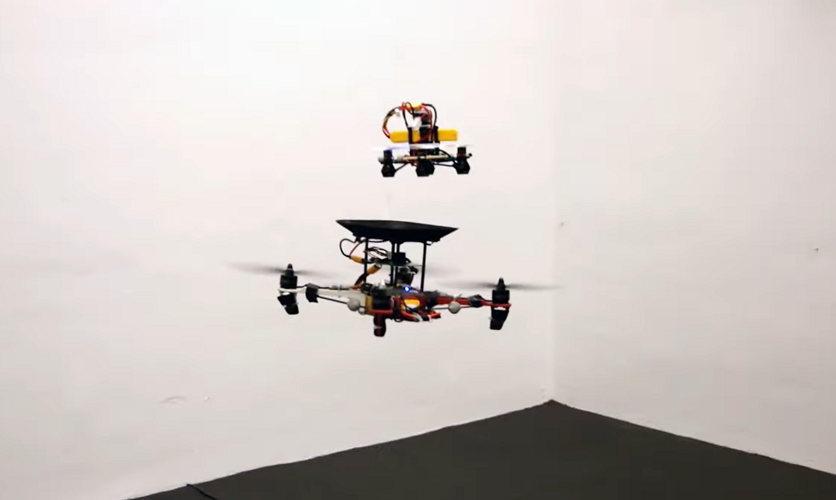This post is also available in:
 עברית (Hebrew)
עברית (Hebrew)
Aircraft of all types, whether it be a jumbo Boeing 747 or a small quadcopter drone, use some sort of energy source to keep them up in the air. However, whether it be fuel or AA batteries, every aircraft takes into account the weight of energy source, since the heavier the fuel, the harder it is for the aircraft to stay airborne. That is why airplanes rarely ever takeoff with a completely full fuel tank, the extra weight of the unnecessary extra fuel causes the airplane to burn significantly more fuel than necessary.
However, the case is slightly different for quadcopter drones. Most consumer drones give up about a third of their mass for batteries and even then you’ll probably have a flight time of about 30 minutes at best. Where many aircraft are capable of aerial refueling, not many drones are capable of aerial recharging. At least not until recently.
Researchers at UC Berkeley have managed to develop a quadcopter equivalent of an aerial refueling tanker. They have come up with the concept of having small quadcopters fly towards a larger, primary quadcopter and have the smaller quadcopters charge the primary drone, all while staying midair.
The primary quadcopter used for the researchers experiment weighs 820 grams and with its 2.2 Ah lithium-polymer battery, is capable of withstanding a flight time of approximately 12 minutes as reported by Spectrum.ieee.org. The smaller drones weigh only 320 grams and are powered by a 0.8 Ah battery. Their cargo is a 1.5 Ah battery to be used to charge the larger quadcopter.
The system works by having the smaller drone approach the primary drone from above, slowly descending into position into the primary drone’s docking tray. Once connected, the main drone is powered completely by the smaller drone’s battery. The small drone can power the main quadcopter for about five minutes and once the smaller drone’s battery is about to run dry, it disconnects from the primary drone to be replaced by a new charging drone.
The hope is to have the primary drone’s battery power the big drone only during undocking and docking. In testing, the researchers were able to extend the main drone’s flight time from 12 minutes to almost an hour.
This technology could see plenty of applications in the civilian and military fields, such as surveillance and shipping. Considering that the technology could hypothetically allow for infinite flight, this novel concept of aerial quadcopter “refueling” could help change the quadcopter game.


























